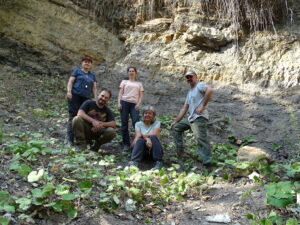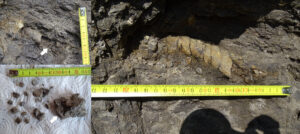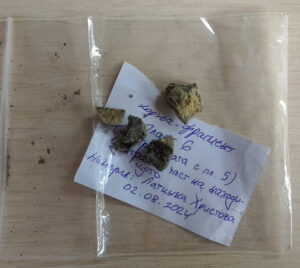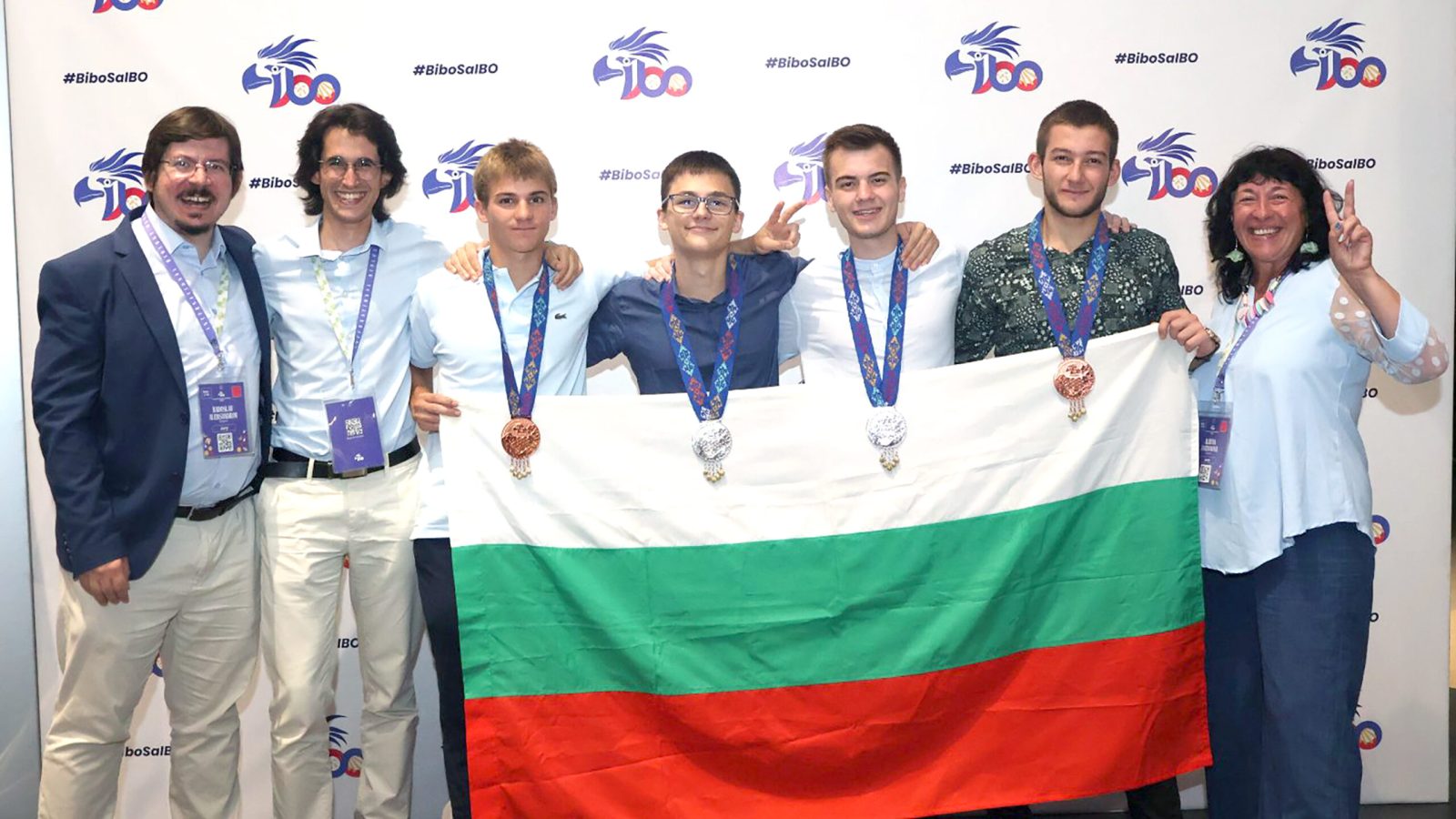The seventh palaeontological expedition of the National Museum of Natural History at BAS to the locality of dinosaurs and other vertebrate fauna of Late Cretaceous epoch near the town of Tran took place from 2 to 10 August 2024. The team led by Assoc. Prof. Latinka Hristova included Asst. Vladimir Nikolov and Ralitsa Bogdanova from NMNHS-BAS, Prof. Marlena Yaneva and Assoc. Prof. Lubomir Metodiev from the “Strashimir Dimitrov” Geological Institute of BAS as well as volunteers Gergana Velyanova from the Institute of Mineralogy and Crystallography of BAS and Georgi Sevov.
As a result of the activities carried out by the team, more than 30 new vertebrate fossils were collected which not only enrich the palaeontological scientific collection of the NMNHS-BAS but will also allow palaeontologists to reveal more details about what the animal world in the region looked like more than 80 million years ago.
The fossil finds are diverse but this year the most numerous are the fragments of turtle shells. Among the more interesting specimens is an almost completely preserved bone from a large reptile, probably a dinosaur, discovered by palaeontologist Ralitsa Bogdanova from NMNHS-BAS. The bone is relatively well preserved but badly cracked which necessitated removing it from the rock using a protective plaster mold. It will thus be transported safely to Sofia where it will be cleaned, and the species of the animal will be determined. Interestingly, only remains of amphibians and fish have been found in the rock where the bone was found, and then only when examining sediment samples in the laboratory.
Other fossils found by the palaeontologists include three teeth from crocodyliformes, two teeth and one scale from bony fish, and bone fragments from the limbs of amphibians. In addition to vertebrate remains, palaeontologists found numerous fossilized seeds and nuts from plants suggesting that the vegetation in the area was quite diverse.
Very curious are two miniature fossils of currently unspecified taxonomic affiliation which resemble fossils found in Upper Cretaceous sedimentary rocks in Central Europe, thought to represent insect eggs. If this is confirmed, the finds from Tran area will prove to be the first traces of Mesozoic insects in Bulgaria.
In addition to their work at the site, the researchers made rounds around Tran and nearby villages in search of new rock outcrops of deposits containing vertebrate fossils. At one of the locations visited, sedimentary rocks were found whose characteristics appear to be similar to those of rocks with dinosaur remains in which plant remains similar to those found in the deposit site were found. Based on the rock samples collected by the scientists, analyses will be carried out to establish the age of the sedimentary deposits and the characteristics of the natural setting in which they accumulated. The results will show whether this location will prove to be a new locality of Upper Cretaceous vertebrate fauna in Bulgaria.
The seventh expedition to the palaeontological site near the town of Tran was funded by the Bulgarian National Science Fund.








